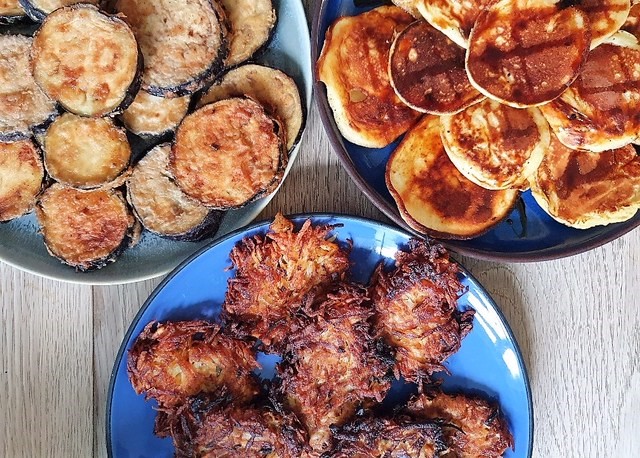The history and traditions of Chanukah food
28 November 2022
The history and traditions of Chanukah food
Chanukah, from the Hebrew word dedication, celebrates the rededication of the 2nd Temple of Jerusalem in 164 BCE. The Maccabees, a small group of Jewish rebels led by Judas, restored the Temple and purified the new altar using the remnants of some pure oil found in a small flask, sufficient to burn for only one day. A ‘miracle of light’ kept the candelabra (menorah) alight for eight days with these drops of oil, giving the Maccabees enough time to source more oil and keep the light in the Temple burning. This is celebrated each year at the Chanukah as we light candle each night for 8 nights.
Culinary historians have noted that the ‘pure oil’ found and described was likely to have been extra virgin olive oil, which was the oil of the region and in keeping with the first fruits that God bestowed on the Israelites.
The traditional fayre of Chanukah is naturally fried food. Latkes & sufganiot or doughnuts, both of which have a relatively recent culinary history, represent this festival. There are suggestions dating back to the Middle Ages that dairy food was also traditional fayre for Chanukah and the original filling for the latke.
From the Yiddish word for pancake, they are inherently made with potato, and known in Hebrew as levivot. Made from grated potato that has had all the water squeezed out of it, a little grated onion and bound together with egg and flour, then shaped into a potato cake & fried for a couple of minutes on each side in shallow oil, until crisp and golden. The modern latke, which is growing in popularity in our quest for healthy eating, is being made using a variety of healthy root vegetables, squash, courgettes, kale, cauliflower and beetroot, paired with fragrant spices and earthy herbs and bound together with a flour that is either reduced or free from gluten, such as spelt or buckwheat, and lightly fried in sunflower or rapeseed oil, served with a dipping sauce or yoghurt dressing
Sufganiot (doughnuts) are round fried pieces of dough, derived from the ancient Aramaic word sufganin that appeared in the scriptures and signified a spongy dough, thought to have come from the ancient Greek word ‘sfog’ meaning sponge. A fried piece of yeasted dough with jam in the middle is thought to go back to the Jewish diaspora in the 14th century, when all kinds of doughs were simply fried in oil to commemorate the miracle of Chanuka. Fillings started off savoury, however during the 16th century when the price of sugar fell significantly, jam or jelly was inserted into the middle, and the sweet doughnut was borne. The first written recipe for a jelly doughnut in 1532 was discovered in a German cookbook called Kuchenmeisterei, (The Mastery of the Kitchen), one of the first cookbooks of Gutenberg’s famed printing press. The so-called doughnut of the time was made by stuffing jam between two round slices of bread and then deep-frying the whole thing in lard… not very healthy, but probably rather delicious!!
Now the most popular food of Chanuka throughout Israel, fried rings of yeasted dough filled to the brim with jam, cream, chocolate, caramel to name but a few, are sold on every street corner in the weeks preceding the festival as well as during and for some time after… you are even met at the airport during the festival with a welcome doughnut… Happy Chanuka!






